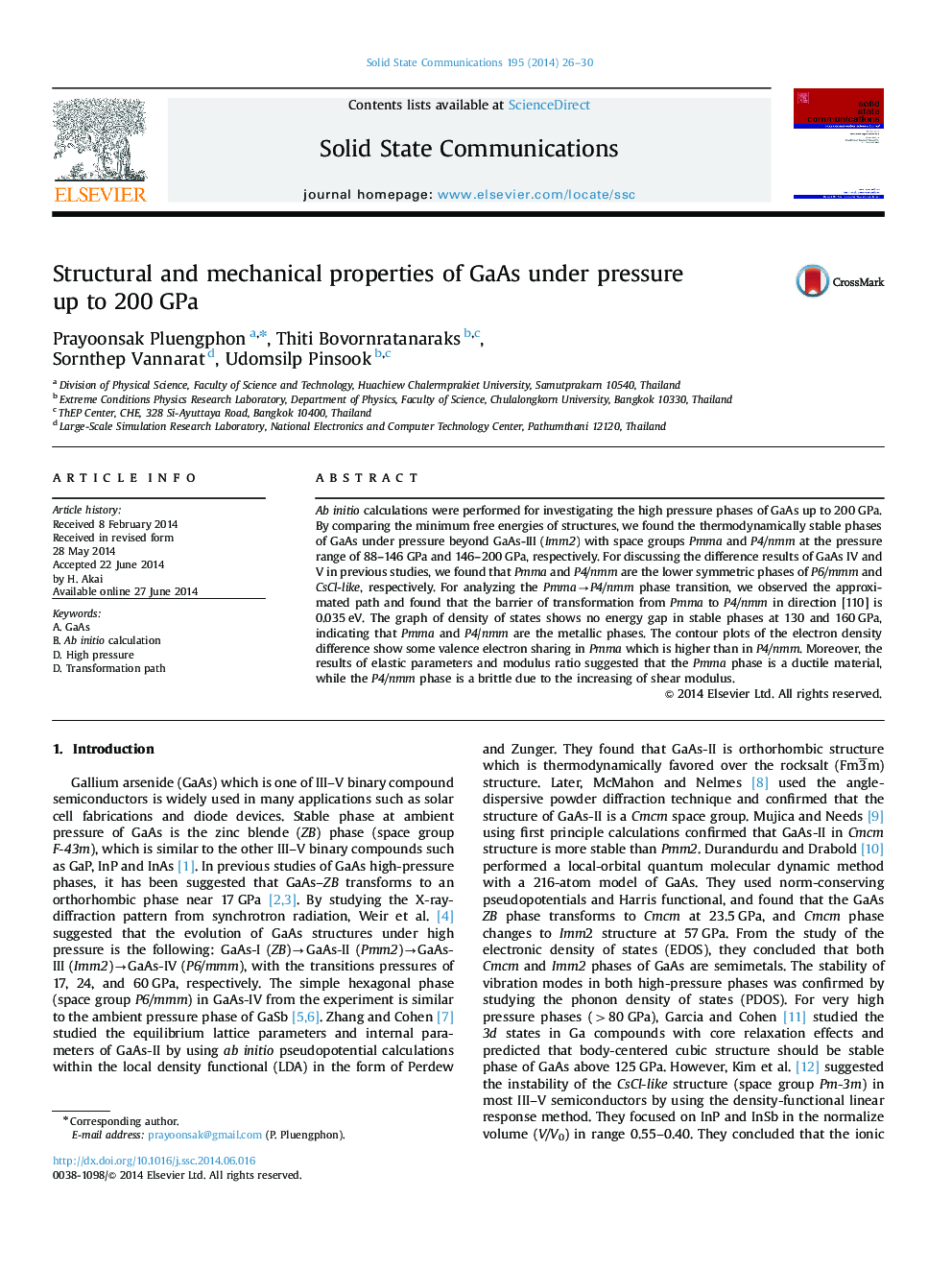| Article ID | Journal | Published Year | Pages | File Type |
|---|---|---|---|---|
| 1591741 | Solid State Communications | 2014 | 5 Pages |
•We added the definition of electron density difference.•We explained anisotropy of bonding and found covalent bond in some plane of Pmma.•Band structure showed that the macroscopic property of Pmma is the metallic phase.•We explained the difference structures between Pmma and P6/mmm.
Ab initio calculations were performed for investigating the high pressure phases of GaAs up to 200 GPa. By comparing the minimum free energies of structures, we found the thermodynamically stable phases of GaAs under pressure beyond GaAs-III (Imm2) with space groups Pmma and P4/nmm at the pressure range of 88–146 GPa and 146–200 GPa, respectively. For discussing the difference results of GaAs IV and V in previous studies, we found that Pmma and P4/nmm are the lower symmetric phases of P6/mmm and CsCl-like, respectively. For analyzing the Pmma→P4/nmm phase transition, we observed the approximated path and found that the barrier of transformation from Pmma to P4/nmm in direction [110] is 0.035 eV. The graph of density of states shows no energy gap in stable phases at 130 and 160 GPa, indicating that Pmma and P4/nmm are the metallic phases. The contour plots of the electron density difference show some valence electron sharing in Pmma which is higher than in P4/nmm. Moreover, the results of elastic parameters and modulus ratio suggested that the Pmma phase is a ductile material, while the P4/nmm phase is a brittle due to the increasing of shear modulus.
